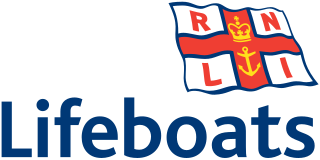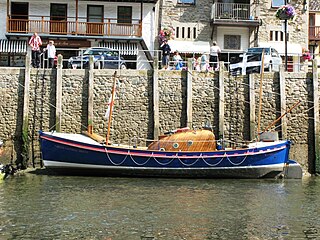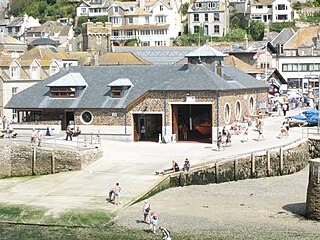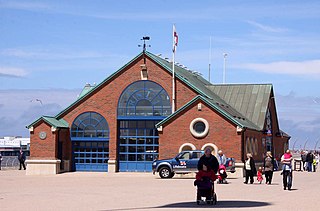| ON [lower-alpha 1] | Name | Built | Builder | Description | In Service [1] | Station | Notes [1] |
|---|
| 377 | Unnamed,
Coard William Squarey | 1892 | Chas. Howson & Co, Liverpool | 34 ft 3 in (10.44 m) long | 1892–1906 | Hoylake | |
| 380 | H. G. Powell | 1895 | | 35 ft 0 in (10.67 m) long | 1892–1915
1916–1947 | Point of Air
On Display at Colwyn Bay | |
| 381 | John and Henrietta | 1895 | | 35 ft 0 in (10.67 m) long | 1896–1919 | Formby | |
| 383 | Admiral Briggs | 1895 | Rutherford & Co, Birkenhead | 35 ft 0 in (10.67 m) long | 1895–1914 | Hilbre Island | |
| 413 | James Stevens No.2,
Reserve No.9A | 1898 | | 35 ft 6 in (10.82 m) long | 1898–1912
1912–1914
1914–1924 | Campbeltown
Relief fleet
Hilbre Island | |
| 419 | Unnamed | 1870 | | 33 ft 0 in (10.06 m) long | 1870–1894
1896–1898 | Point of Air
Point of Air No.2 | |
| 425 | James Stevens No. 8,
Reserve No.9B | 1899 | | 35 ft 0 in (10.67 m) long | 1899–1913
1913–1916
1916–1920 | Ardrossan
Wells-next-the-Sea
Relief fleet | |
| 441 | Isabella | 1900 | | 35 ft 0 in (10.67 m) long | 1900–1932 | Buckhaven | |
| 443 | William Arthur Millward | 1900 | | 35 ft 0 in (10.67 m) long | 1901–1931 | Dunbar | |
| 451 | James Stevens No. 17 | 1900 | | 36 ft 0 in (10.97 m) long | 1900–1922 | Porthoustock | |
| 452 | James Stevens No. 18 | 1901 | | 35 ft 0 in (10.67 m) long | 1901–1931 | Girvan | |
| 458 | Constance Melanie | 1901 | | 35 ft 0 in (10.67 m) long | 1901–1934 | Coverack | Lost at Brancaster in 1966 |
| 460 | John Groome,
Reserve No.9C | 1901 | | 35 ft 0 in (10.67 m) long | 1901–1914
1914–1916
1916–1923
1923–1925
| Killough (Rossglass)
Relief fleet
Point of Air
Stored | |
| 461 | Chapman,
Reserve No.9B | 1901 | | 35 ft 0 in (10.67 m) long | 1901–1920
1920–1924
1924–1938 | Groomsport
Relief fleet
Hilbre Island | December 2023, Restored, On display at the Old Lifeboat House, Lytham |
| 477 | George Leicester | 1901 | | 35 ft 0 in (10.67 m) long | 1901–1927 | Minehead | |
| 493 | William Maynard | 1902 | | 35 ft 0 in (10.67 m) long | 1903–1930 | Skerries | |
| 494 | Hopwood,
Reserve No.9F | 1902 | | 35 ft 0 in (10.67 m) long | 1902–1924
1924–1927
1927–1930 | Portrush
Relief fleet
Minehead | Yacht on Thames, last seen 1977 |
| 495 | Louisa Heartwell | 1902 | Thames Ironworks and Shipbuilding Company | 38 ft 0 in (11.58 m) long and 10 ft 9 in (3.28 m) wide, fitted to 14 oars double-banked, and fitted with two water ballast tanks and two sliding or drop-keels [2] | 1902–1923
1923–1931 | Cromer
Cromer No.2 | December 2023, Under restoration at Chatham Historic Dockyard |
| 498 | Philip Beach | 1902 | | 35 ft 0 in (10.67 m) long | 1902–1930 | Burnham-on-Sea | Last seen at Liverpool, 1957 |
| 511 | Olive | 1903 | | 36 ft 0 in (10.97 m) long | 1903–1921 | Eastbourne | Believed broken up after WWII |
| 514 | Alexandra | 1903 | | 35 ft 0 in (10.67 m) long | 1903–1930
1931–1934 | Hope Cove
Cromer No.2 | December 2023, Holiday Home, Isle of Seil |
| 516 | Charles Deere James,
Reserve No.9 | 1903 | | 35 ft 0 in (10.67 m) long | 1904–1909
1909–1913
1913–1919
1919–1924
1924–1925
1925–1927 | St Agnes
Relief fleet
Humber
Relief fleet
Winterton No.2
Relief fleet | Destroyed in Cherbourg Harbour, 1950 |
| 524 | William and Emma | 1904 | Thames Ironworks & Shipbuilding Co. | 35 ft 0 in (10.67 m) long and 10 ft 0 in (3.05 m) wide, fitted to 12 oars double-banked, and fitted with two water ballast tanks and two sliding or drop-keels [3] | 1904–1916 | Salcombe | Capsized and wrecked on service, 27 October 1916. |
| 526 | Charles Burton,
Reserve No.9C | 1904 | | 38 ft 0 in (11.58 m) long | 1904–1909
1909–1913
1913–1919 | Grimsby
Relief fleet
Caister | Broken up, Peel, IOM |
| 536 | J C Madge | 1904 | Thames Ironworks & Shipbuilding Co. | 41 ft 0 in (12.50 m) long and 11 ft 0 in (3.35 m) wide, fitted to 16 oars double-banked, and provided with two sliding or drop-keels and two water-ballast tanks [4] | 1904–1936 | Sheringham | December 2023, On display at "The Mo", Sheringham |
| 542 | John Rowson Lingard,
Reserve No.9D | 1905 | Thames Ironworks & Shipbuilding Co. | 36 ft 0 in (10.97 m) long | 1905–1920
1921–1930
1930–1937 | Mablethorpe
Relief fleet
Blackpool | December 2023, Stored for restoration, River Yonne, Migennes, France |
| 545 | Edward Z Dresden | 1905 | Thames Ironworks & Shipbuilding Co. | 38 ft 0 in (11.58 m) long and 10 ft 9 in (3.28 m) wide, fitted to 14 oars double-banked, and provided with two drop-keels [5] | 1905–1929 | Aldeburgh No.2 | Last reported at Ardrishaig, Argyll & Bute, 1974 |
| 553 | John | 1906 | | 35 ft 0 in (10.67 m) long | 1906–1931
1932–1937 | Cloughey
Newcastle | |
| 554 | Samuel Lewis | 1906 | | 35 ft 0 in (10.67 m) long | 1906–1932 | Skegness | Last reported, Arbroath 1970s |
| 555 | Hannah Fawsett Bennett | 1906 | Thames Ironworks & Shipbuilding Co. | 38 ft 0 in (11.58 m) long | 1906–1931
1931–1936 | Hoylake
Relief fleet | Last reported, South Benfleet, 1937 |
| 569 | Sarah Kay | 1906 | | 38 ft 0 in (11.58 m) long | 1907–1943 | Skateraw | Last reported at Skegness, 1966 |
| 578 | William Cantrell Ashley | 1907 | | 35 ft 0 in (10.67 m) long | 1907–1948 | New Quay | December 2023, in storage at the National Collections Centre, Nantgarw for restoration |
| 586 | Caroline | 1908 | | 38 ft 0 in (11.58 m) long | 1908–1935 | Blakeney | Last reported Barrow-on-Soar, 1960 |
| 587 | James Scarlett | 1908 | | 36 ft 0 in (10.97 m) long | 1908–1925
1925–1928 | St Annes
Demonstration | Last reported at Kings Lynn, 1969 |
| 598 | Brother and Sister | 1909 | | 36 ft 0 in (10.97 m) long | 1909–1932 | Llanddulas | |
| 604 | Janet Hoyle | 1909 | | 35 ft 0 in (10.67 m) long | 1910–1932 | Ayr | Broken up at Brightlingsea, 2016 |
| 626 | Arthur Lionel | 1912 | | 35 ft 0 in (10.67 m) long | 1912–1929
1930–1939 | St Peter Port
Minehead | Last reported at Fishguard, 1973 |
| 636 | James and John Young | 1913 | | 35 ft 0 in (10.67 m) long | 1913–1930
1930–1939 | Ardrossan
Relief fleet | December 2023, upturned hull on display at the People's Palace, Glasgow. |
| 661 | Mary Stanford | 1916 | S. E. Saunders, East Cowes | 39 ft 0 in (11.89 m) long and 10 ft 9 in (3.28 m) wide, fitted to 14 oars double-banked, and fitted with two water ballast tanks and two drop-keels [6] | 1916–1928 | Rye Harbour (Winchelsea) | Damaged on service at Rye Harbour in 1928, broken up 1929 |
| 665 | Baltic | 1916 | S. E. Saunders, East Cowes | 38 ft 0 in (11.58 m) long and 10 ft 9 in (3.28 m) wide, weighing 4 tons 11cwt. 1qr.fitted to 14 oars, and fitted with 12 relieving tubes, ordinary keel, 2 drop keels, and 2 water ballast tanks [7] | 1916–1936
1936–1940
1940–1943 | Wells-next-the-Sea
Aldeburgh No.2
Relief fleet | Broken up at Southampton, 2006 |
|


















